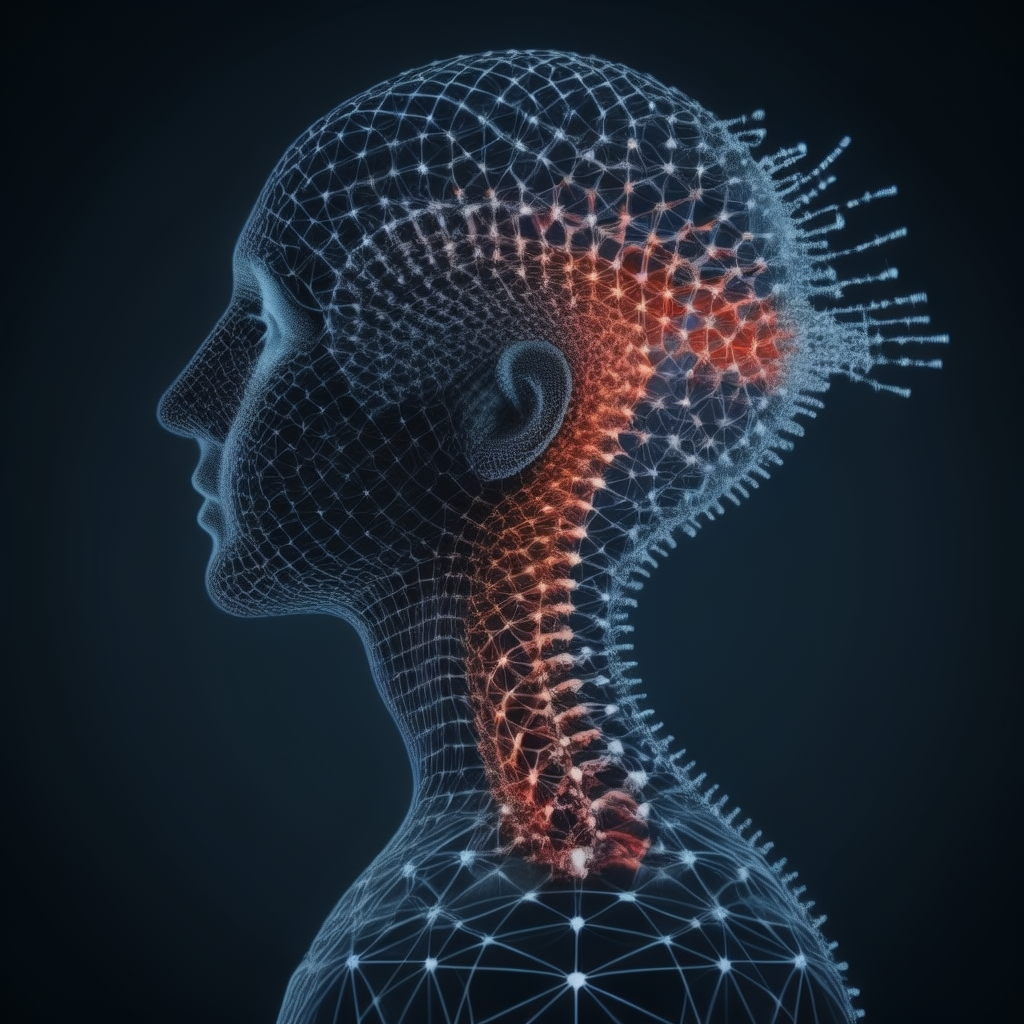In today’s world, where building complex products like self-driving cars, machine learning algorithms, and other sophisticated technologies demands an advanced level of reasoning, the ability to think algorithmically and analytically is essential. Algorithmic thinking—a structured, step-by-step, and highly logical approach to solving problems—enables engineers, scientists, and creators to meticulously break down complex tasks, analyze each component, consider variables, and address edge cases before reaching a solution.
This article dives into the importance of algorithmic thinking, strategies to develop it, and the role of attention to detail in building a robust, analytical mindset.
1. Understanding Algorithmic Thinking and Analytical Approach
What Is Algorithmic Thinking?
Algorithmic thinking is a problem-solving technique that involves identifying a process or series of steps (algorithms) to reach a specific goal. Each step builds upon the last, bringing us closer to the solution. This structured process allows us to address complex issues by breaking them into manageable parts.
In the context of tech, algorithmic thinking is foundational in creating:
- Self-driving car systems: Complex sets of instructions manage variables like speed, distance, GPS coordinates, weather conditions, and pedestrian movement.
- Machine learning models: Algorithms need data cleaning, feature engineering, model training, testing, and tuning—all carefully broken into specific tasks.
- Systems design: Every user action triggers a sequence of responses (or algorithms) in software, taking into account variables such as user data, behavior, and error handling.
Why Is an Analytical Approach Important?
Analytical thinking supports algorithmic thinking by:
- Identifying patterns within data and deducing logical connections.
- Processing variables and constraints to uncover and define potential edge cases.
- Evaluating results for accuracy and effectiveness, driving continuous improvement.
With a strong analytical mindset, one can spot flaws in reasoning, break down tasks into smaller parts, and apply sound, evidence-based judgments to validate each solution.
2. Building Algorithmic Thinking Skills: Step-by-Step Strategies
a. Learn the Fundamentals of Algorithms
- Understand core algorithm concepts: Study the basics of data structures, sorting, searching, and dynamic programming.
- Practice developing pseudocode: Write out steps in plain language, outlining the logical flow without focusing on code syntax initially.
- Use flowcharts: Visually map the steps. This exercise helps break down complex processes and see the broader structure.
b. Strengthen Logical Thinking
- Practice with logic puzzles and games: Chess, Sudoku, and logic puzzles develop pattern recognition, problem decomposition, and strategic thinking.
- Study Boolean logic and conditional statements: Logic gates, conditions, and operators (AND, OR, NOT) form the basis for understanding more complex decision-making structures.
c. Break Down Problems
- Decompose tasks into subtasks: Identify every step, action, and process that might be involved in achieving the goal. Self-driving cars, for instance, require subsystems for image processing, object recognition, localization, and path planning.
- Use modular thinking: Think in terms of functions or modules that can solve specific problems. For example, in machine learning, separate data preprocessing from feature engineering.
d. Identify Variables and Edge Cases
- Define relevant variables: Isolate and define every element that affects the outcome, such as road conditions for autonomous vehicles or the influence of outliers in data for ML models.
- Predict edge cases: Consider unusual or extreme scenarios that could disrupt the process. For example, think about how an algorithm would handle sudden system failures or unexpected data inputs.
e. Develop a Testing Mindset
- Write tests for every step: Test individual components of your solution to ensure they work independently.
- Evaluate with “what if” scenarios: Assess how changes in variables affect the final output to improve adaptability and robustness.
3. Attention to Detail: Why It’s Crucial and How to Build It
Attention to detail is essential for algorithmic thinking. When dealing with complex systems, a minor oversight can lead to significant issues in output accuracy, efficiency, or safety.
How to Build Attention to Detail:
- Mindfulness exercises: Cultivate focus by practicing mindfulness. It helps in improving concentration and reduces the likelihood of skipping details.
- Double-check each step: Before moving to the next step in an algorithm, verify the previous one’s outcome. Repeatedly analyzing your process builds a habit of thoroughness.
- Review and optimize code: When coding, get into the habit of reviewing and refactoring code. Small optimizations can improve clarity, efficiency, and reliability.
4. Developing a Fact-Driven, Reasoning-Based Approach
Being fact-driven and avoiding assumptions helps ensure accuracy and credibility. Here’s how to adopt a reasoning-based mindset:
a. Seek Evidence-Based Solutions
- Validate data: Before trusting data sources, scrutinize them. In machine learning, for example, clean and preprocess data to remove biases and ensure representativeness.
- Use scientific reasoning: Approach each task as a hypothesis to be tested. For instance, when deciding on the best route for an autonomous car, consider multiple data inputs (traffic, weather) and use models to test route predictions.
b. Document and Explain Assumptions
- Create clear documentation: Recording assumptions and decisions helps maintain a transparent development process.
- Challenge assumptions: Regularly question if initial assumptions hold true as the process unfolds. For example, if a people-detection algorithm initially assumes a particular range of clothing colors, test it across a broader range to validate its reliability.
c. Encourage Peer Review and Feedback
- Collaborate with others: Involve others in code reviews and solution brainstorming. Diverse perspectives can reveal overlooked details and unconsidered edge cases.
- Seek feedback loops: In complex systems, set up automated feedback loops to get real-time performance insights and optimize the system accordingly.
5. Practice, Practice, Practice: Developing Algorithmic Thinking Over Time
Building an algorithmic mindset requires regular practice and application across various contexts. Here are some methods to refine these skills:
- Work on real-world projects: Start with small projects and gradually increase complexity, such as designing sorting algorithms, creating a simple neural network, or building basic automation scripts.
- Compete in coding challenges: Platforms like LeetCode, HackerRank, and CodeSignal offer a range of challenges that reinforce problem-solving skills and algorithmic knowledge.
- Stay updated on tech advancements: Follow developments in AI, software engineering, and machine learning to see how others are solving complex problems and to inspire innovative approaches.
1. Cognitive Science and Brain Plasticity
- Neuroplasticity and Problem Solving: Neuroplasticity—the brain’s ability to reorganize itself by forming new neural connections—plays a critical role in developing new ways of thinking. When learning algorithmic thinking, each repetition helps to solidify these connections, making it easier over time to process complex, step-by-step information.
- Pattern Recognition and Heuristics: Human brains are wired for pattern recognition, which is a foundation of algorithmic thinking. With repeated exposure to patterns (e.g., solving math problems or debugging code), the brain learns to categorize and process information faster.
- Neural Pathways and Analytical Ability: Specific tasks, such as solving puzzles or coding, stimulate the prefrontal cortex, where logical and sequential thinking occurs. Over time, this area strengthens, enhancing one’s ability to think step-by-step.
2. Evolutionary Biology and Adaptive Problem Solving
- Evolution of Sequential Thought: Early humans developed analytical abilities for survival—hunting, gathering, and planning all required the ability to break down complex tasks. These adaptive pressures led to advancements in sequential and logical thinking, allowing humans to plan multi-step strategies and improve their environments.
- Problem-Solving as a Survival Skill: Humans’ capacity for problem-solving evolved from the need to overcome obstacles like finding shelter, food, and safety. Analytical thinking allowed early humans to identify resources, evaluate risks, and predict outcomes, traits that have been honed and passed down genetically.
3. Genetics and Hereditary Intelligence
- Genetic Influence on Logical Reasoning: Research suggests that certain cognitive traits, such as logical reasoning, can have genetic components. Some individuals may naturally find it easier to think in structured, step-by-step ways due to genetic influences on cognitive processing speed, memory, and attention span.
- Epigenetics and Cognitive Development: Environmental factors can influence gene expression, shaping one’s ability to think algorithmically. For example, children raised in environments that encourage problem-solving and creativity can develop stronger cognitive skills, even if their genetic predispositions vary.
4. Neuroscience of Focus and Attention
- The Role of the Prefrontal Cortex: Algorithmic thinking heavily relies on the prefrontal cortex, which is responsible for executive functions like planning, attention, and problem-solving. Strengthening this area can improve sequential thinking abilities and focus, which are crucial for analytical reasoning.
- Neurotransmitters and Thought Processing: Dopamine and norepinephrine play roles in motivation and attention, which are essential for following complex, step-by-step processes. Understanding how these neurotransmitters affect concentration can offer insights into optimizing algorithmic thinking.
- Role of Working Memory: Working memory is vital for retaining multiple steps of a process simultaneously, which is key to algorithmic thinking. The more we practice holding and processing information, the more capacity we build for handling complex tasks.
5. Computer Science Foundations and Computational Thinking
- Abstraction in Problem Solving: Abstraction, the process of simplifying a problem by focusing on key information, is central to algorithmic thinking. Training in abstraction allows us to disregard unnecessary details and focus on the primary elements that influence an outcome.
- Decomposition Skills: Decomposition involves breaking down complex problems into smaller, manageable parts. In computing, for example, breaking down a task into functions or modules is essential. Practicing decomposition regularly in everyday scenarios helps improve this skill.
- Algorithmic Efficiency: In computational terms, efficiency refers to optimizing steps to minimize time and resource usage. Analyzing the efficiency of different algorithms enhances one’s ability to prioritize actions, allocate resources effectively, and make decisions.
6. Behavioral Psychology and Mindset Development
- Fixed vs. Growth Mindset in Problem-Solving: Individuals with a growth mindset are more likely to embrace challenges and view obstacles as opportunities for learning. This mindset fosters resilience, an essential quality when building algorithmic thinking, as complex problems require perseverance.
- Incremental Learning and Positive Reinforcement: Behavioral psychology reveals that incremental progress and positive reinforcement can enhance learning. When we complete a step or solve a piece of a complex problem, the brain releases dopamine, reinforcing the behavior and encouraging repeated effort.
- Cognitive Behavioral Techniques (CBT) for Structured Thinking: CBT often uses structured, step-by-step frameworks to analyze problems and develop solutions. Applying CBT techniques can help break down thoughts, reduce anxiety, and clarify decision-making processes, which are essential for algorithmic thinking.
7. Mathematics and Logical Frameworks
- Boolean Logic and Decision Trees: Boolean logic helps develop clear decision-making frameworks by focusing on true/false scenarios. Practicing Boolean reasoning and using decision trees can refine one’s ability to analyze variables and scenarios in structured ways.
- Probabilistic Thinking: Algorithmic thinking often involves probabilistic analysis, especially in machine learning. Understanding probability and statistics improves the ability to anticipate outcomes and make informed choices, even with incomplete information.
- Calculus and Continuous Thinking: Calculus, particularly in rates of change and optimization, teaches individuals to consider how different variables impact outcomes. This thinking is useful for self-driving car algorithms, where speed, distance, and time interact dynamically.
8. Attention to Detail and Sensory Processing
- Sensory Filtering and Cognitive Load: Attention to detail relies on the brain’s ability to filter out distractions. Strengthening sensory processing, like visual or auditory discrimination, helps focus on relevant details and disregard unnecessary information, critical for structured problem-solving.
- Micro vs. Macro Processing: Successful algorithmic thinking requires the ability to zoom into details (micro) while keeping the overall objective in mind (macro). Developing this skill involves practicing tasks that require close observation (e.g., debugging code) as well as tasks that require high-level thinking (e.g., architectural design).
- Error Detection and Correction: Regularly practicing error detection sharpens focus and improves accuracy. For instance, identifying inconsistencies or mistakes in a process encourages detailed analysis, ensuring that each step aligns with the intended outcome.
9. Philosophical and Cognitive Approaches to Logic
- Deductive vs. Inductive Reasoning: Deductive reasoning allows individuals to draw specific conclusions based on general principles, while inductive reasoning builds generalizations from specific observations. Developing both reasoning methods enriches algorithmic thinking and adaptability.
- Cause and Effect in Systematic Thinking: Algorithmic thinking benefits from a strong understanding of causality. By examining how specific actions cause certain outcomes, one can better anticipate consequences and structure algorithms effectively.
- Abstract vs. Concrete Thinking: While abstract thinking helps understand complex principles, concrete thinking applies those principles in practical ways. Balancing both is necessary for turning high-level ideas into actionable algorithms.
10. Educational Psychology and Structured Learning
- Scaffolding Techniques: Scaffolding involves gradually increasing task difficulty to build confidence and skill. For example, learning to code simple algorithms before moving to complex machine learning models ensures foundational understanding and application of structured thinking.
- Recursive Learning: Recursive learning—repeatedly revisiting key concepts—reinforces memory and understanding. Revisiting algorithms or problem-solving techniques after mastering them provides deeper insights and enhances retention.
- Inquiry-Based Learning: Inquiry-based learning encourages students to explore questions and seek answers themselves. This self-directed approach promotes curiosity and a proactive mindset, both important for algorithmic thinking.
11. Cultural and Social Influences on Cognitive Development
- Collective Problem-Solving: Culturally, many societies value collective reasoning and collaborative problem-solving. Working in groups can expose individuals to diverse perspectives, helping refine one’s own approach to algorithmic thinking.
- Cognitive Diversity: Exposure to varied disciplines, such as art, science, and literature, fosters flexible thinking. Studies show that cognitive diversity within teams promotes innovation, as team members bring unique problem-solving methods, making group projects particularly effective in tech and engineering fields.
- Mindfulness and Emotional Intelligence: Social intelligence fosters empathy and helps individuals anticipate human-centered design needs. Emotional intelligence also supports focused attention by promoting stress resilience, which is valuable when tackling complex algorithmic challenges.
These perspectives illuminate various angles that shape algorithmic thinking, from the neuroplasticity that allows learning to cultural values that foster cognitive flexibility. Embracing this breadth of insights enriches one’s problem-solving approach, ultimately advancing one’s capacity to think algorithmically and analytically across any discipline or project.
Spatial Intelligence and Visualization Skills
- Mental Simulation of Processes: People skilled in spatial intelligence can mentally simulate processes, a skill essential for algorithmic thinking. For instance, engineers designing complex machinery often visualize how components interact before actually building the model. By mentally constructing and visualizing steps, we reduce trial and error and ensure logical flow.
- Visualization of Abstract Data: Visualizing abstract data structures (like graphs, networks, and flowcharts) helps in understanding algorithms in programming. Practicing with mind maps or flowcharts enhances one’s ability to mentally organize and structure information.
- Spatial Memory and Navigation Skills: Studies show that people with good spatial memory often excel in sequential tasks. Enhancing spatial awareness through exercises (like 3D puzzles or virtual navigation games) builds brain pathways that support structured thinking.
2. Cross-Disciplinary Learning and Holistic Understanding
- Bridging Disciplines for New Perspectives: Learning across fields such as economics, biology, and engineering can provide novel insights for complex problem-solving. For instance, economics models (like supply and demand) can be applied to AI learning models, providing a new framework for resource allocation in algorithms.
- Synthesis of Diverse Knowledge: Algorithmic thinking benefits from the ability to synthesize knowledge from unrelated areas. Studying natural systems like bee colonies or neuron networks, for instance, provides insights into decentralized problem-solving models, which inform distributed computing.
- Building Intuition Through Analogies: Analogies from other disciplines make abstract ideas more concrete. For example, comparing a self-driving car’s sensor system to the human nervous system simplifies the learning of multi-step processes and feedback loops.
3. Long-Term Memory and Knowledge Structuring
- Schema Formation for Faster Recall: The brain stores information in schemas—mental structures that allow fast recall. Developing schemas by categorizing information (e.g., if-then statements, decision trees) provides a ready-made structure to apply when solving new problems, speeding up the thought process.
- Chunking of Complex Data: Chunking breaks down complex data into manageable units. For instance, coders often break down a long script into functions. Practicing chunking in everyday life (like grouping groceries by section) builds the habit of creating modular, algorithmic steps.
- Hierarchical Structuring of Information: This is where knowledge is structured from high-level concepts down to specific details. By organizing information hierarchically (e.g., concept-mapping), we can more easily navigate complex tasks without being overwhelmed.
4. Mind Mapping and Ideation Techniques
- Systematic Brainstorming for Multiple Solutions: Techniques like mind mapping help visualize relationships between concepts. When facing an engineering problem, a mind map can reveal all possible influences, interactions, and potential pitfalls.
- Divergent Thinking for Creative Solutions: Divergent thinking is the process of generating multiple unique solutions to a problem, essential in algorithm development where one issue may have various approaches. Practicing divergent thinking through activities like brainstorming sessions or word association games can foster creative problem-solving.
- Reverse Brainstorming for Backward Analysis: This involves starting with the desired outcome and working backward to identify the necessary steps, a helpful method when programming or debugging. Applying reverse brainstorming regularly can make backward planning a natural approach.
5. Practice of Logical Fallacies and Argumentation
- Identifying Logical Fallacies: Recognizing logical fallacies in reasoning (e.g., ad hominem, straw man) strengthens analytical skills, as algorithmic thinking requires objective, clear reasoning. Practicing by identifying fallacies in everyday conversations enhances mental discipline.
- Constructing Clear Arguments: Constructing sound arguments relies on strong premises and valid inferences, an approach that translates well to code logic and conditional statements. Practicing structured argumentation reinforces structured thinking.
- Evaluating Biases in Decision-Making: Bias can lead to incorrect assumptions in problem-solving. Training oneself to recognize cognitive biases (confirmation bias, recency bias) helps build a disciplined, evidence-based approach to solutions.
6. Incremental Complexity in Learning Models
- Scaffolding Through Progressive Learning: This involves gradually increasing the complexity of problems to build confidence and skill without overwhelming the brain. For example, starting with basic math before tackling calculus. In tech, one might start by learning basic code logic before attempting to design algorithms.
- Adapting Learning Complexity: Adjusting learning materials’ difficulty to slightly above the current level (the Zone of Proximal Development) maximizes engagement and improvement. This approach can be applied to all forms of learning, from solving puzzles to writing code.
- Iterative Problem-Solving Techniques: Iterative problem-solving involves repeating cycles of learning and application. For example, the iterative design of machine learning models allows for testing, revising, and refining solutions.
7. Development of Abstract Reasoning Abilities
- Learning to Generalize Solutions: Abstract reasoning involves recognizing patterns across different contexts. Practicing this with real-life problems—such as recognizing the same logical structure in a business issue and a coding problem—reinforces the ability to generalize, a critical skill in algorithm design.
- Moving from Concrete to Abstract Thinking: Often, concrete examples serve as the basis for abstract concepts. Starting with tangible examples (like a recipe as an algorithm) and transitioning to abstract thinking enhances comprehension.
- Exploring Hypotheticals and ‘What-If’ Scenarios: Considering hypothetical scenarios builds mental flexibility and prepares the mind for conditional structures. This approach is key in programming and decision-making, where multiple pathways may need to be anticipated.
8. Enhanced Working Memory and Information Retention
- Practicing Dual N-Back Exercises: Research suggests dual n-back exercises can improve working memory, crucial for algorithmic thinking. This type of exercise trains the brain to retain multiple pieces of information, essential for multi-step problem-solving.
- Memory Retention Techniques Like Spaced Repetition: Spaced repetition is a memorization method that reinforces information over time. Using this to memorize syntax, logic gates, or algorithm steps builds a solid foundation for thinking in a structured, reliable manner.
- Mnemonic Devices for Sequence Recall: Mnemonics simplify information retrieval. Applying mnemonics to coding syntax or mathematical formulas helps retain steps, making recall faster and more accurate when working on complex problems.
9. Ethics and Responsible Decision-Making
- Weighing Consequences of Algorithms: Ethical algorithm design requires the ability to foresee potential consequences and make value-based decisions. For instance, designing self-driving cars involves predicting moral scenarios and incorporating ethical frameworks.
- Responsible AI Practices: In machine learning, responsible AI includes fair, bias-free decision-making. Understanding the ethical implications of biases reinforces critical thinking and encourages solutions that account for diverse perspectives.
- Building Empathy in Design: Human-centered design thinking fosters empathy, allowing creators to consider the real-life impacts of their work on end-users. Practicing this builds the habit of thinking beyond the technical steps, factoring in the broader effects of algorithms.
10. Language Processing and Linguistic Skills
- Understanding Syntax and Grammar for Code Logic: Language structure mirrors code logic; both have syntax rules. Practicing linguistic precision can sharpen one’s ability to structure code logically and read code fluently.
- Natural Language Processing for Algorithmic Understanding: Studying NLP techniques gives insight into how computers process human language. This bridges human and machine understanding, allowing for more effective communication and problem-solving.
- Cross-Language Comparisons for Flexibility: Just as bilingual individuals may be more mentally flexible, understanding multiple coding languages can enhance adaptability and creative solutions. Translating ideas between languages reinforces algorithmic adaptability.
11. Physical Exercise and Cognitive Enhancement
- Exercise and Brain-Derived Neurotrophic Factor (BDNF): Physical activity stimulates BDNF, which supports neural growth and plasticity, improving overall cognitive function. This effect indirectly benefits problem-solving and attention to detail.
- Mindfulness Practices for Focused Attention: Meditation and mindfulness increase focus and reduce cognitive “noise.” These practices are shown to enhance clarity and allow for better sequential thought.
- Coordination Exercises for Brain Efficiency: Coordination activities, such as juggling or dance, activate neural circuits involved in sequential processing. Practicing these can make sequential, logical processes feel more fluid and natural.
12. Exposure to Puzzles and Games
- Strategic Games for Decision Trees: Games like chess and Go rely on complex decision trees, training the mind to anticipate and calculate multiple steps. Engaging in these games fosters an intuitive sense of sequence and structure.
- Logic Puzzles for Deductive Reasoning: Logic puzzles (e.g., Sudoku) strengthen deductive reasoning, a foundation of algorithmic thinking. Deductive logic helps in breaking down complex issues by focusing on what’s known to solve for what’s unknown.
- Programming Puzzles for Functional Thinking: Coding challenges on platforms like CodeSignal or LeetCode simulate real-world problems that require step-by-step solutions. Practicing with these puzzles builds programming fluency and adaptability.
These points cover diverse perspectives, enriching the understanding of algorithmic and analytical thinking. The development of these skills incorporates neurological, educational, psychological, and physical influences, each contributing to the capacity for structured, detailed problem-solving.
6. Conclusion: Cultivating an Algorithmic and Analytical Mindset
Algorithmic thinking, attention to detail, and an analytical approach are essential for tackling complex challenges in today’s tech-driven world. From breaking down problems into manageable steps to developing a testing mindset and validating assumptions, building these skills allows individuals to approach problems logically and systematically. Regular practice, engagement with real-world problems, and cultivating a mindset that values evidence-based reasoning will set you up for success, whether in designing self-driving cars or developing cutting-edge AI algorithms.
By nurturing these skills, we not only enhance our professional capacities but also contribute to creating reliable, impactful technologies that solve pressing problems and meet the complex demands of modern society.






